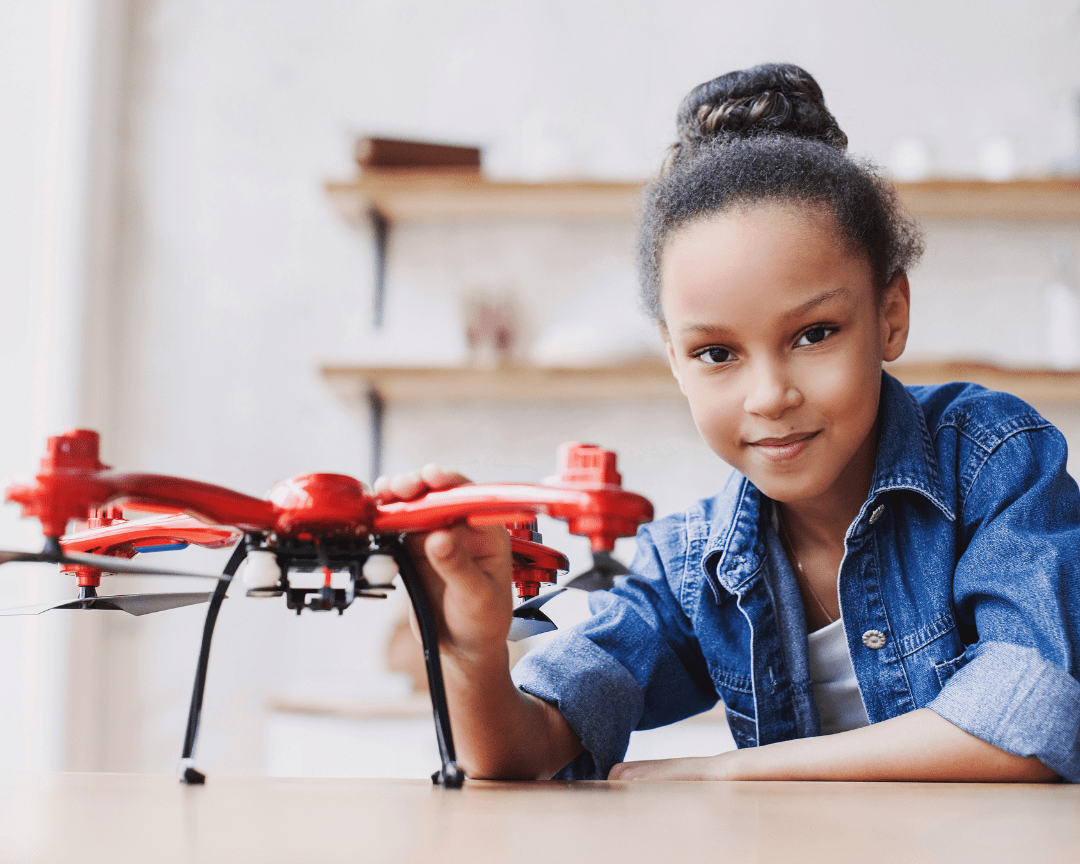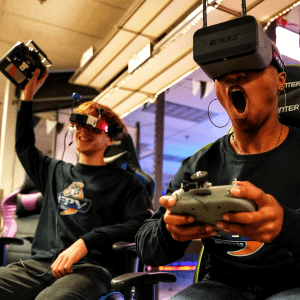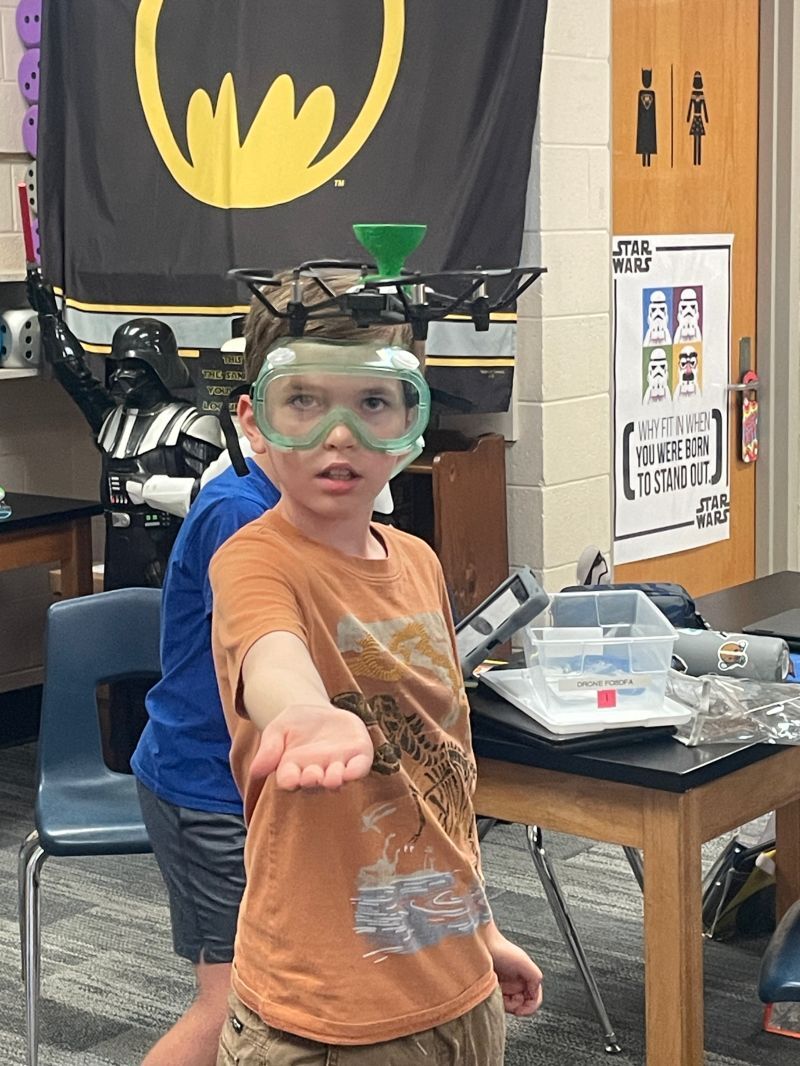Every single day, the Drone Legends team gets to witness drones being used as powerful educational tools. These little unmanned aerial vehicles have a huge impact on student learning outcomes, especially in the subjects of science, technology, engineering, and mathematics (STEM).
Even if you know that drones are useful in education, there are a few things that determine the success of educational drones. What type of drone works best in schools? How much should schools spend on drones for students? Which features, specs, and curriculum do teachers need to consider?
If you want to know why drones are perfect for education and what to expect from educational drone programs, keep reading.
The Impact of Drones on Education
In different countries around the world, drone use in educational settings has been on the rise— and for great reasons. First off: drones are fun and require technical focus. Students of all backgrounds and learning styles can easily approach drones because of the sheer curiosity they ignite in young minds.
Drone education supports students’ practice of critical thinking, the scientific method, situational problem-solving, and collaborative leadership. From gaining simple aerodynamic skills to advanced computer programming knowledge, educational drones are extremely adaptable to any learning level.
Drones for High School Students
Student drone programs have proven an increased curiosity about engineering. Since drones are already heavily used in fields like mechanical engineering, chemical engineering, environmental engineering, and industrial engineering, drones help introduce high schoolers to overlapping career paths. They also open learning opportunities for diverse populations.
In the past, robotics and STEM programs have been known for being costly. Robotics, particularly, aren’t always accessible to students outside of financially stable families. Because drones are more affordable than robotics, they allow schools to serve all student populations with crucial tech skills necessary in society.
For example, aerial drones have been used to teach information technology and even cybersecurity to high school students of under-represented populations. A study followed the effects of educational drones on 10th and 11th graders. The report found:
- Improved problem-solving skills
- More positive attitudes toward STEM subjects
- Higher STEM proficiency scores
- Increased motivation and participation in hands-on activities
- More confidence to claim interest and ambition toward STEM careers
Drones can ignite new levels of educational inquiry, character development, and personal empowerment in all personality and learning types.
Drones for Younger Students
As early as Kindergarten and first grade, kid-friendly drones can be introduced to supplement learning environments. Young students can learn the basics of operating technological devices and practice using machinery responsibly.
Elementary students can learn basic coding, building, spatial reasoning, and career technical skills. Equally as important, elementary kids step into a meaningful experience of social-emotional learning, which employers are deeming just as critical for career success as technical skills. With drones, kids learn both.
Drones in School
Schools that have implemented drone education have seen major benefits in many aspects of education. Here are some of the highlights worth mentioning:
- Drone programs appeal to modern parents and help schools fulfill enrollment
- More STEM teachers retain jobs through school drone programs
- Drone learning helps students meet educational standards
- STEM education with drones supports diverse learning styles
- Tech- and drone-focused curricula help students and educators build character
Educating with drones in school is easier than it seems— especially when applied through a comprehensive drone curriculum. Today, education companies like Drone Legends offer educational programs for schools to set up and start teaching in no time.
Do Drones Increase Engagement?
The Association for Supervision and Curriculum Development recognizes that student engagement is one of the top factors in learning retention. Drones allow teachers, parents, and students to experience fully engaged, high-focused learning.
Classrooms that have included drone education have delivered highly engaging lessons, as students learn to integrate technical, mechanical, social, and creative concepts in hands-on ways. For example, many afterschool programs, remediation programs, and seasonal drone camps use drones to inspire kids to dive in and learn.
Learning to Fly a Drone
Small drones are ideal for teaching students how to fly drones. Microdrones or small quadcopters are standard in education today, as they can be used in the classroom or other indoor spaces like gymnasiums or school cafeterias.
To teach basic drone piloting skills to students, here are some tips:
- Know how to operate the drone before teaching students.
- Understand how to identify and teach drone controls, whether on a remote control or tablet.
- Go over basic flight methods with students such as hover, takeoff, and landing before launching drone assignments.
- Plan a mission for students to follow.
- Go over classroom drone piloting rules and requirements for safety.
As an educator, you might find that learning to fly drones enhances your pedagogy and continued education interests. There are many professional development opportunities for teachers, STEM leaders, and drone enthusiasts.
Best Drones for Education
Educational drones aren’t one size fits all. However, there are a few guidelines to look for when starting out with classroom drones.
The best drones for students are lightweight, compact, and easy to learn how to fly. Depending on the grade level, there are additional features to look for:
- Replaceable propellers: ideal for younger students still learning motor control
- Smartphone apps: effective for teaching tech literacy and programming
- Camera drones: helpful to let students observe the world from a drone’s view
A typical drone model that’s used in schools is the Ryze Tello Mini. It has everything students need to get their hands on advanced technology. With a built-in camera, there are multiple options for remote viewing and creative projects. Weighing under 80 grams, it’s a lightweight drone that can be handled and repaired by elementary school and high school learners.
Read more about drones and drone programs for schools here!
Drone Education Programs
Facilitating a drone education program for students furthers the mission of hands-on, real-world STEM learning of the future. From tech-savvy engineering developments to group integrity building, drone education is predictably one of the most relevant forms of career building of our time.
Drone programs give students the chance to take discovery, innovation, and tactical learning into their own hands. Undoubtedly, drones bring teachers together, combine science and creativity, and provide endless possibilities for career development.
Ready to join the wonderful world of drone education? Get started with a standards-backed, STEM-focused program for learners of all ages. Reach out to Drone Legends to learn more!




